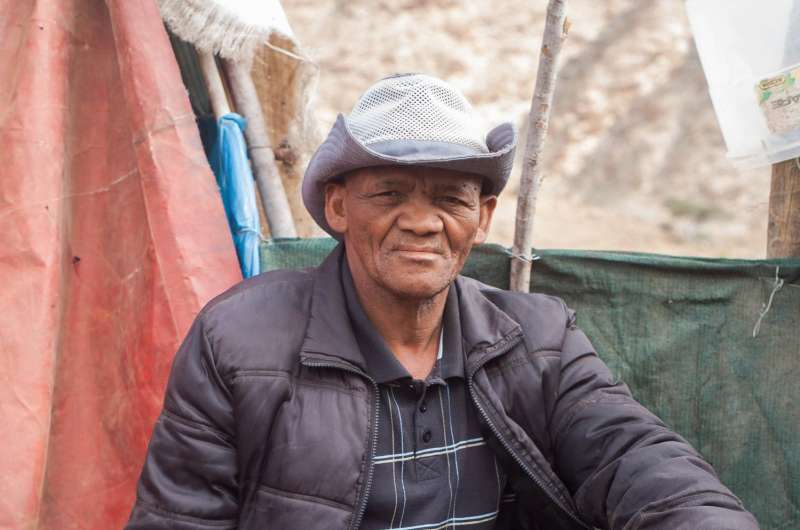Immune diversity among the KhoeSan population

A new study of the KhoeSan of Southern Africa has improved the understanding of immune diversity among the oldest surviving indigenous population in the world.
By analyzing genes of two distinct groups of the KhoeSan, investigators were able to find a level of diversity and divergence in immune cell repertoires much higher than identified in any other population. The findings are described in an article published this month in The Journal of Immunology.
"This study enhances our knowledge of the timing and causes of the selection pressures that contribute to the genetic diversity and may help us understand immune cell functions in disease resistance and reproductive success," said senior author Paul J. Norman, PhD, who recently joined the CU School of Medicine and the Colorado Center for Personalized Medicine.
The scientists reviewed how certain cell receptors and ligands affected the function of "natural killer" cells, which are a type of immune cell that are critical both in defense against pathogens, and in placental development during reproduction.
The genomes of the KhoeSan population have become a major focus for studies of human ancestry and evolution because of the KhoeSan hold a pivotal position in human history.
KhoeSan refers to a broadly dispersed set of human populations indigenous to southern Africa who speak a distinct family of languages characterized by "click" consonants. Studies of Y chromosome, mitochondrial, and autosomal DNA show the KhoeSan as the most genetically variable of human populations.
By studying the variations of the receptors and ligands in the immune gene families of two groups of the KhoeSan, the scientists found "the highest diversity and divergence of polymorphic NK cell receptors and ligands observed to date." On top of this diverse background, they identified that unique genetic variants arose to high frequency independently in the two KhoeSan groups. Surprisingly, each of these variants has the same dramatic impact on natural killer cell function, and likely combats disease specific to this geographic area. This knowledge can be used to manipulate natural killer cell functions in future studies and disease treatment.
The detailed review of genetic factors is a primary goal of personalized medicine. Clinicians and researchers use detailed information about molecular functions to study patterns across populations and to evaluate disease risks and potential treatments for individuals. In 2014, the University of Colorado Anschutz Medical Campus, along with its partners UCHealth, Children's Hospital and CU Medicine, invested in the creation of the Colorado Center for Personalized Medicine.
Another goal is broad collaboration among scientists and clinicians. For this paper in the Journal of Immunology, there are 16 authors listed, including Christopher Gignoux, PhD, associate professor in the Division of Biomedical Informatics and Personalized Medicine at the CU School of Medicine.
More information: Neda Nemat-Gorgani et al, Different Selected Mechanisms Attenuated the Inhibitory Interaction of KIR2DL1 with C2+HLA-C in Two Indigenous Human Populations in Southern Africa, The Journal of Immunology (2018). DOI: 10.4049/jimmunol.1701780



















